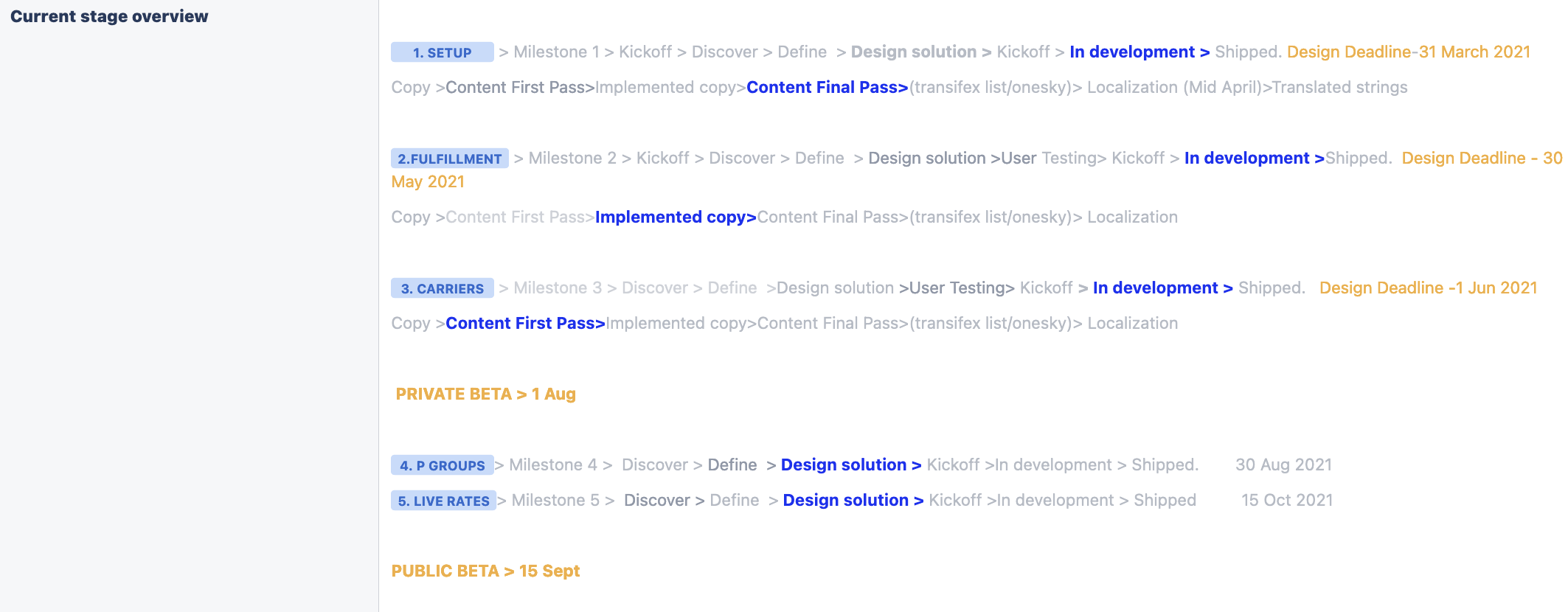Shipping
context
Shipping is one of the major expenses eCom merchants have to bear. To stay competitive, they have to offer free shipping and good shipping rates.
To ship their orders, Lightspeed eCommerce merchants need to create and connect accounts with external shipping applications. These workflows are time consuming, have a lot of friction and require that merchants manually sync information between the different systems, making it very error-prone.
Customers expect free shipping. Merchants need to absorb the cost of shipping themselves.
Lightspeed focuses on supporting small and medium businesses in their path to growth. For over 15,500 merchants in different verticals, with different shipping volume and needs, shipping is one of the key delayers in merchants becoming fully transactional.
This has a negative impact on their relationship with their own customers, and makes it so complex that it is hard for managers/owners to delegate the task.
goals
For LS shipping , we wanted to replace the broken journey with a frictionless flow, giving merchants the ability to ship orders in a fast, easy, cost-effective, and competitive way without leaving Lightspeed.
For example, a merchant who does ~200 eCom orders per month with an average shipping label cost of $10 could save up to $1800 per month.
the team
Product manager
Software architect
2 Full stack developers
1 Front end developer
Quality tester
Content writer
2 Product designers
my role
As the lead designer in the squad, I managed design communications/expectations/timelines. I aligned with product, content, localization, development and with the other designers in the team.
Throughout the project, I ran stakeholder workshops to define project goals, conducted merchant interviews to identify the most pressing needs, and usability testing sessions with interactive prototypes. Along the design phase, I sketched user flows for each app feature and worked closely with the developers in the team to make sure designs were feasible and efficient.
challenges
Shipping is a long process involving many steps, systems and users. At its most simple, shipping is picking and packing individual orders and sending them to end consumers. More and more consumers expect their orders to be shipped for free - the merchant, however, not only needs to pay carriers to pick up and deliver the order, but must also set up a shipping policy visible to users and find the most cost effective efficient way of fulfilling the orders.
The scope of the project was very big, and technically challenging. It covering a long complex journey involving tracking, address validation, cancellation and returns, voiding labels, manifests and packing slips, insurance, customs, currency conversions, differences in how carriers work in different regions, while integrating with both old systems and external systems.
setup
The merchant needs to setup his shipping rates policy - the options end consumers will be offered when they buy online. When the merchant receives an order, they have to buy a shipping label and get the order to the end consumer - they need to fulfill the order.
The price of a shipping label will depend on many things - distance, order value, delivery time, carrier, weight and size to name a few. Based on these factors, different merchants create the shipping policies that is the most advantageous for their own business. It was important for Lightspeed to allow complexity to fit diverse business needs, yet the interface should present the options as clearly as possible.
For Shipping Setup, I tried to maintain Ben Schneiderman’s principle -
“Overview first, zoom and filter, then details-on- demand”
Order fulfillment
Order fulfillment has its own demands - it would live alongside old existing components and flows that we could not change. We could not do much in UI improvement, but we could offer merchants incredible value by allowing them to ship and track their orders without leaving the system.
Learnings
One year into Lighspeed Shipping, Lightspeed acquired Ecwid, a white label eCommerce solution that already has a shipping module. Lighspeed shipping was put on hold while management evaluates the best solution.
It is not uncommon for companies to drop projects when the context changes. In this case, no matter which product offered the best experience, a working product beat a product not yet in production.
I think a job-to-be-done approach, combined with service design ways of visualizing all touch points and dependencies would have helped keep this project within scope, and perhaps allowed us to deliver small bits of functionality incrementally, instead of going for a big bang that never happened.
I was sad to see our efforts put on hold, but glad there is a working solution.
I learnt about small merchants, and how different their mental models and needs are when it comes to shipping. It takes time to find a shipping policy that is effective for a business.

